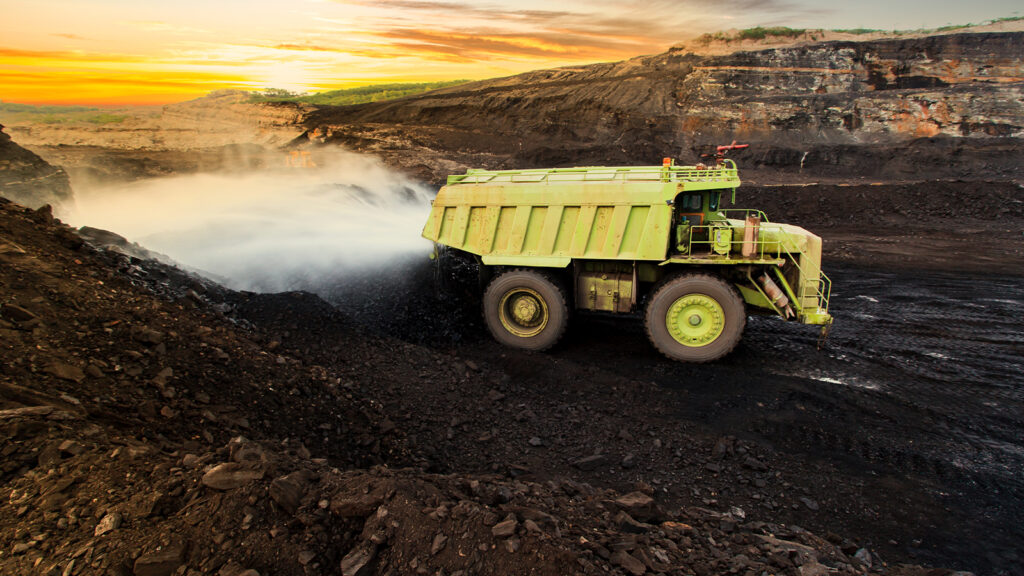This post has been contributed by Ralph Smith, Global Services Director, GEOVIA, Dassault Systèmes.
Mining companies in the APAC region are increasingly focused on achieving environmental, social, and governance (ESG) mandates that require them to evaluate the causes and effects of their operations, communicate outcomes, and address environmental impacts.
To meet these requirements, mining strategies must go beyond mere beyond pit optimization and incorporate ecological and biodiversity concerns. Mining companies face critical questions about incorporating ESG components, conducting evaluations and simulations, and understanding the risks of their choices.
“Dassault Systèmes is committed to promoting sustainable practices for resource extraction, product development, and recycling to create a sustainable resource lifecycle.”

We take a holistic approach to the mining industry, with a vision that encompasses three equally important aspects:
- Sustainable resources: Discovering, defining, revealing and reusing natural resources.
- Sustainable environment: Conserving and improving the environment.
- Sustainable lifestyle: Revealing sustainable urban ecosystems for inclusive governance.
Dassault Systèmes’ systems engineering approach creates a model of a sustainable planet based on the United Nations’ Sustainable Development Goals and European Taxonomy. This allows for the development and validation of cases for mining, construction, and smart cities, and is defined by four key pillars:
- Water stewardship: Monitoring water usage in industries like mining and optimizing circular use.
- Energy emissions: Modeling energy systems and solving the problems related to them, to ensure user expectations are met.
- Social values: Maintaining open and transparent communication with communities.
- Future-proofing: Ensuring sustainable land management by incorporating strategies for mine closure and waste management into short-term mining plans.

How virtual twins bring new efficiencies in mining
Dassault Systèmes’ virtual twin technology supports efficient analysis of the top mining candidates and their prioritization.
“The virtual twin technology allows companies to simulate hundreds of thousands of scenarios and narrow down candidates that may yield positive outcomes across various influencing factors, including price.”
This is particularly beneficial for metals-based operations that are affected by price volatility, as it allows for adjustments to be made in response to market fluctuations. By providing insights into multiple economic parameters, the virtual twin technology can help reduce costs, generate more cash flow, and promote sustainable mining practices.
In addition to economic parameters, evaluations can be conducted for different mining strategies, such as analysis of alternative direction strategies. This can provide alternative mining strategies with benefits of cost reduction and address sustainability and mine closure. This can also help miners decide on in-pit dumping and develop a shorter haulage strategy to reduce the carbon footprint of operations.
The Dassault Systèmes SIMULIA DigitalRock tool has important applications in mining. This tool can help simulate the extraction of copper, for example, and understand the porosity of the rock it is embedded in using machine learning.
It can also help mining companies decide whether to venture beneath the surface to create smaller caves or sub caves in the rock, leveraging data to save costs.
“Virtual twin technology can also help model and simulate bottlenecks in the plant operations to eliminate them and optimize fleet management systems for better extraction of value from waste.”
Streamlining waste management for ESG
Changes to short-term processes can have major ramifications for mine closure and waste management. In terms of waste management, mining companies can build a virtual twin of the waste management system to meet ESG mandates and understand how to extract further value from waste.
By creating a virtual twin of the waste management system with cloud-based 3D visualization, mining companies can ingest and analyze all the data related to the waste dumps and conduct simulations on optimally leveraging marginal waste and lower value materials to extract further value from waste.

Integrated mine closure plans, which have major ESG implications, exist at most mines but are not typically executed properly. The virtual twin technology can help mining companies understand the consequences of deviations in mine closure plans on operations and ESG, whether in the operations cycle or closure cycle.
“Using the virtual twin, a 3D model can be created of all the data in the various systems in one virtual environment.”
This model allows mining companies to see how these data points are interacting in the life stages of the mine and how they are influenced by changes in water quality, diversions of rivers, waste management build-up, and soil revegetation. It can also help visualize outcomes and communicate clearly to communities and stakeholders about a company’s commitment to integrated closure.
Virtual twins can help mining companies drill down into the data around water stewardship, including managing boreholes, creek sample points, and processing plants where water is brought in from the community to better use, manage, and recycle the water or conduct ESG analysis. The data can also be used to analyze where better opportunities lie.
Instead of sinking billions of dollars into a pit over a 20-to-30-year horizon, virtual twin technology can help miners mine selectively by prioritizing for rock conditions and sinking fewer costs. Ultimately, the technology can introduce systems reengineering and simulations to test the limits of what is possible in mining operations while ensuring environmental sustainability.
